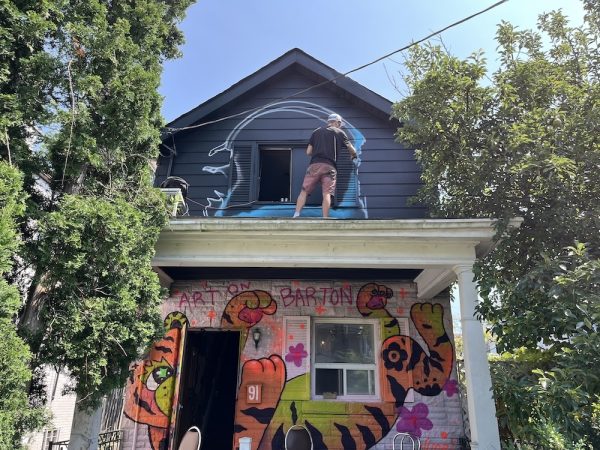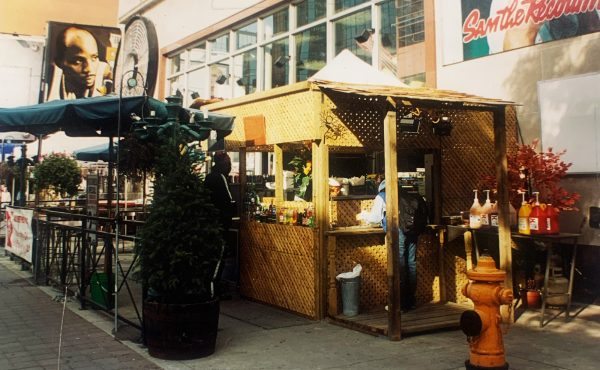This isn’t your typical house slated for demolition.
The lawn isn’t wildly overgrown, and the structure isn’t dilapidated. Instead, 91 Barton Ave. is bustling with activity, a sense of rebirth fills the air, and with it the promise of creative freedom .
It’s not the situation that is typically found when a changing of the guard takes place – when old homes become new ones. But here, it’s an ephemeral canvas where artists, both established and emerging, have the space to try something new, if even just for a moment.
So, what exactly is happening in this Seaton Village house and why?
For that, we turn to Stephanie Avery, a multidisciplinary visual artist from Toronto who has been practising for nearly two decades.
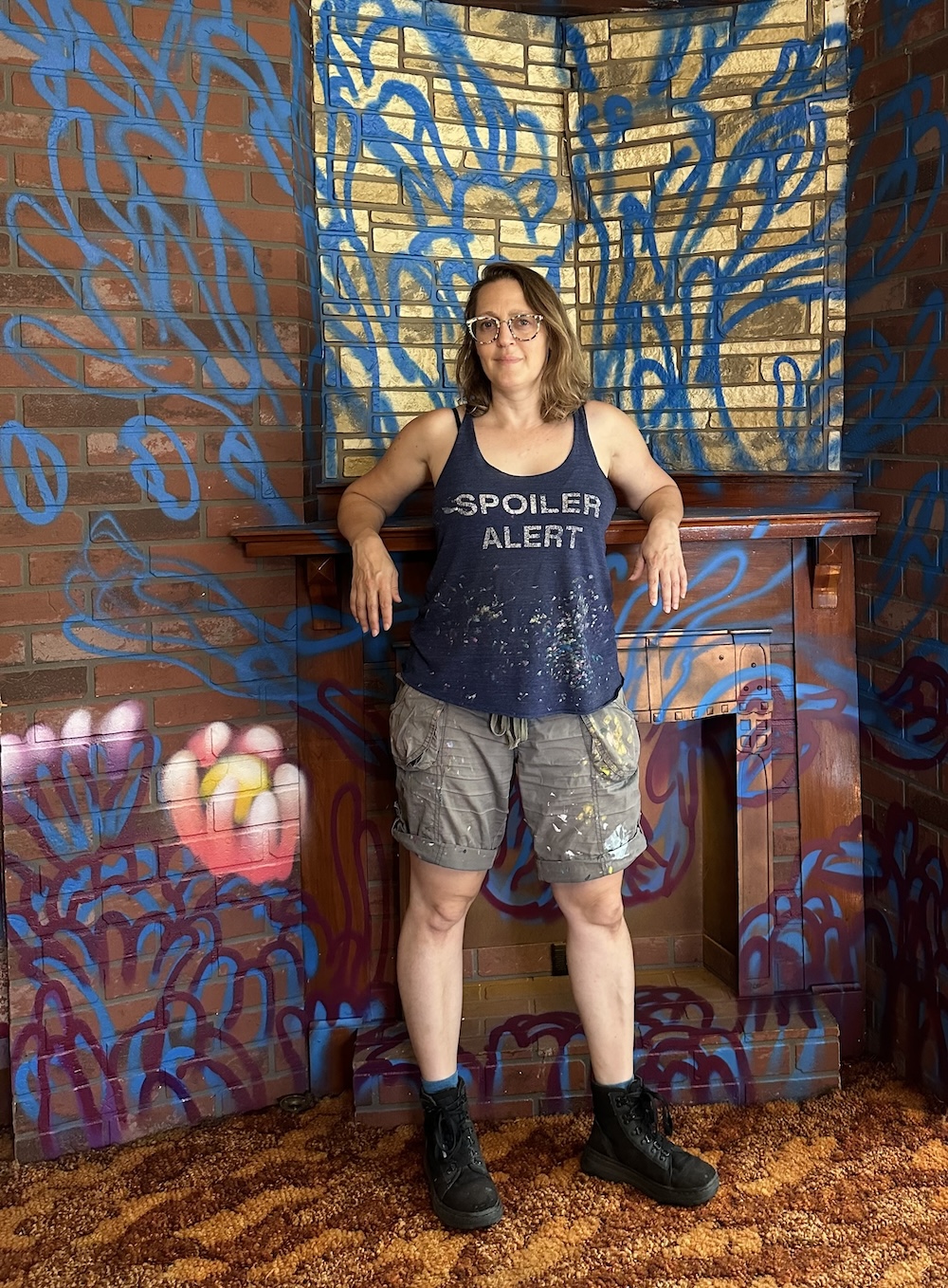
Describing her general approach to art as intervention, with much of her work based on found objects and spaces, Avery takes creative approaches to explore how we interact with these objects and spaces.
She’s also an emerging muralist, which led Avery to gather artists to transform the exterior and interior of 91 Barton Ave.
The home was recently bought by Green Street Flats, a Toronto real estate development company. Like many old houses in the city, the property was purchased to make way for something new. But this story has a twist.
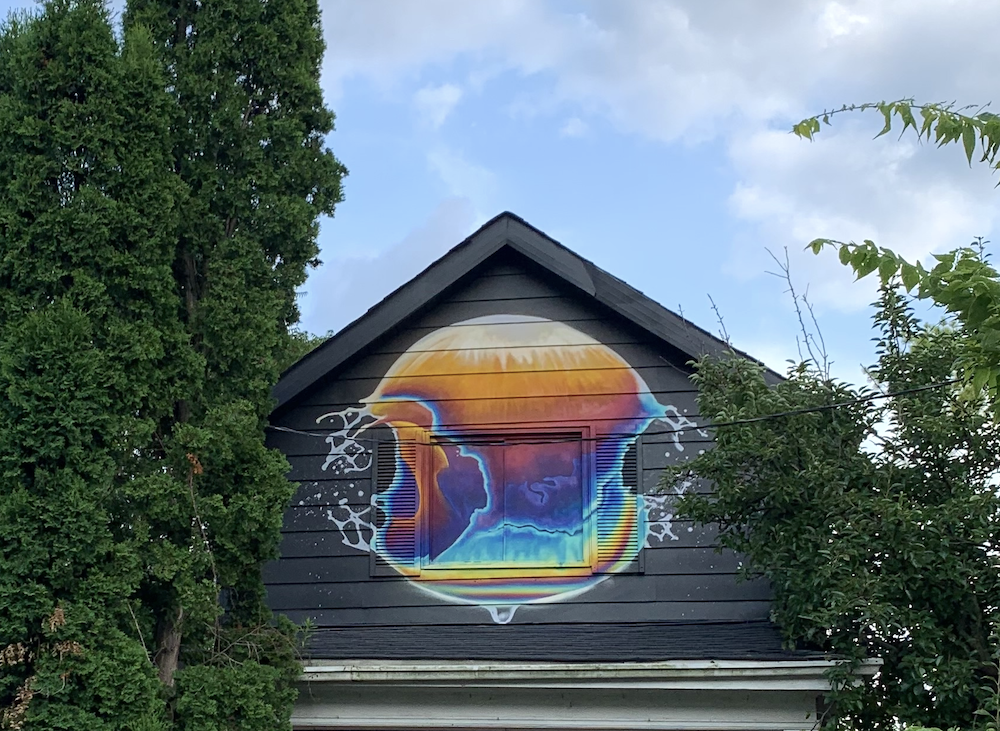
Avery emailed Green Street Flats asking if the home that once housed a family of nine could have one final send-off before its demolition, to turn the building into an immersive mural instillation for the public to enjoy. And the developers said ”yes.“
To help fund the project, Avery reached out to The Awesome Foundation’s Toronto Chapter, a community-focused organization that supports innovative projects through $1,000 micro-grants. With the grant in hand, the money went towards the cost of paint and materials.
As part of a collective of muralists, Avery, along with Jieun Kim, Jenneen Marie, Tara Dorey, Andre Kan, and others are using the grant to transform the space into an offering for Toronto.
Avery says, “In here, we’re turning absolutely everything into the art.”
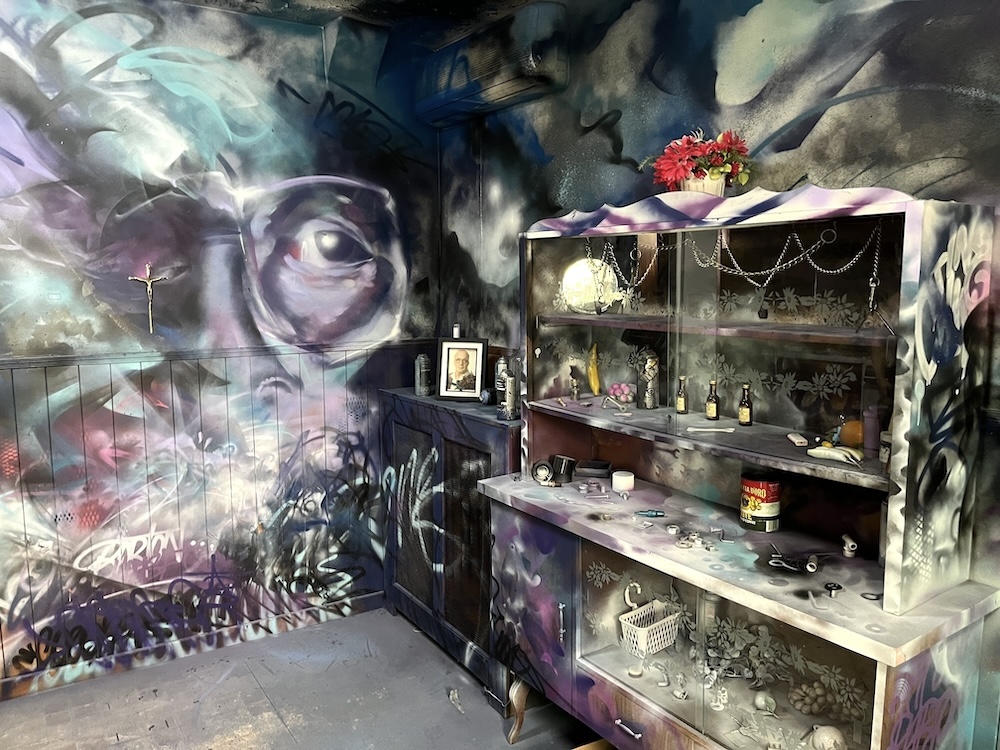
They are all being influenced in some way or another by the objects and décor that already existed in the house and the bits of history they represent, for example incorporating furniture left in the house into their work. It’s an homage to a family that once called this house a home, while providing the artists with the opportunity to experiment

Each artist can do what they like. “Nobody has to run any designs past the developers. They’re giving us free rein to do what we want. We get to play and be free and try new things in ways you can’t when you’re doing a commission,” says Avery.
And because the house will be demolished, it’s “very liberating for us as artists to be able to come here and know that that’s going to happen. It frees us in a way to be even more creative.”
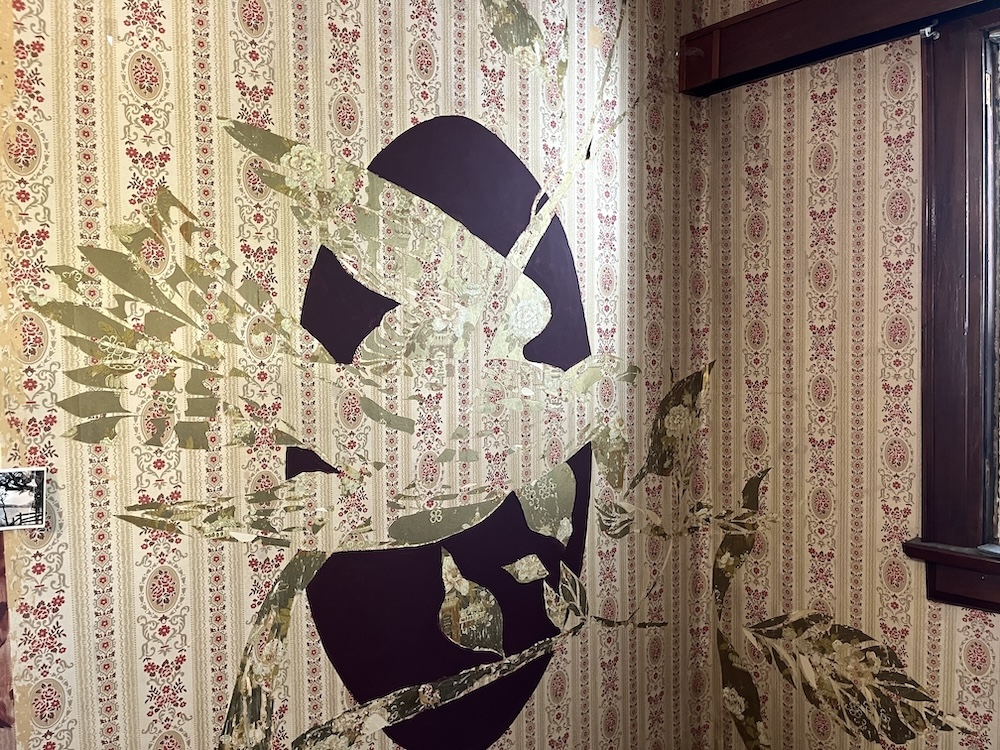
But this project is about more than providing a playground for a select group of artists to do their thing. It’s about supporting the arts in general; it’s about community and housing; it’s about utilizing empty spaces; it’s about celebrating what once was and adding bursts of colour through a little or a lot of paint, providing some additional beauty and wonder to our city.
Avery is also making it a priority to create spaces in the home for emerging muralists. She explains that building a portfolio is a massive challenge because most don’t often get opportunities to paint walls unless they’re already established.
But how do you gain the experience? Well, these types of projects could be the answer.
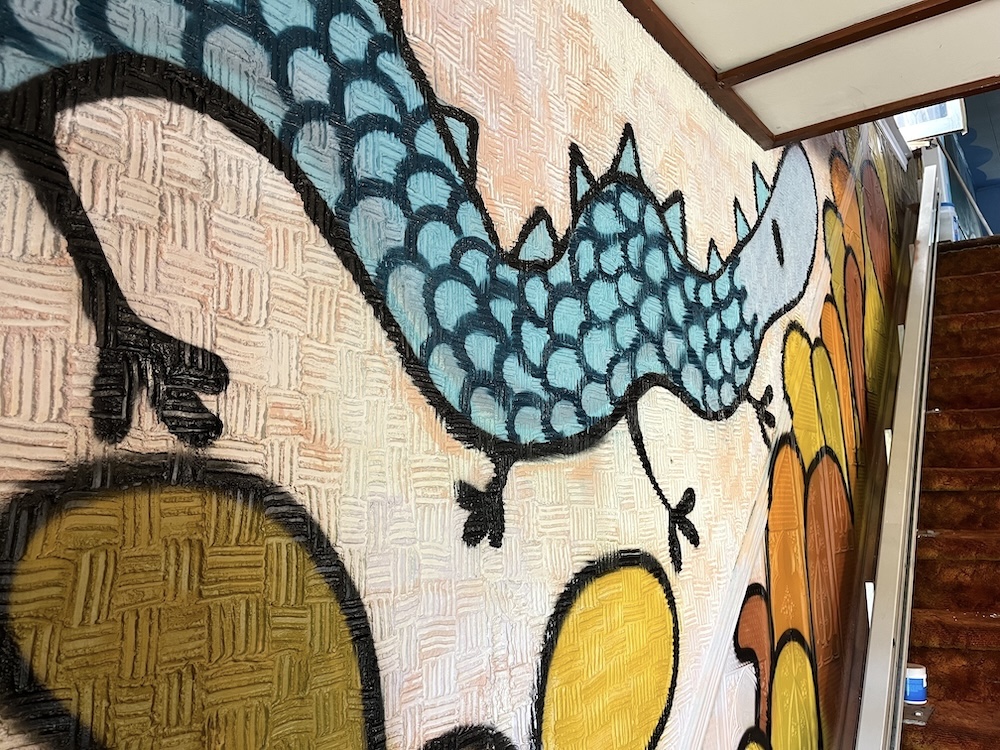
“This house is just sitting here empty for however long between it being purchased by the developers and it being demolished, and we might as well use it for something, right?”
These types of structures could be the entryway for many artists to get the professional experience they need, which is hard to attain. And how many other properties like this are just sitting vacant before they’re torn down?
Avery hopes the Barton project model could catch on and be done in more spaces across the city.
“I love finding and getting opportunities for other artists; like, it fills me with so much joy.”
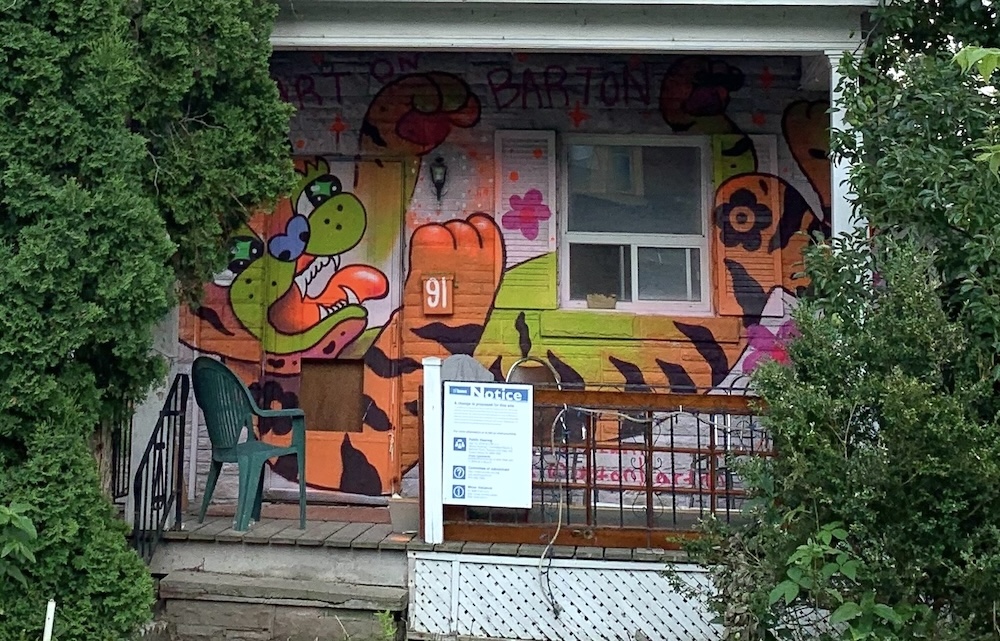
This project also serves as a final farewell to a home where seven children were raised, who now have families of their own. The artwork helps tell the story of those who lived here for decades before moving on to a new chapter – much like the property itself. Projects like these are a way to explore the history of the buildings we lose in Toronto.
But Avery’s interpretation sees this in a positive light – and she’s using her artwork to explain.
She’s creating a mural of a fire creature coming out of the fireplace to represent a cleansing fire, like a controlled burn in a forest. A way for something old to bring new life. And that can be a beautiful thing. A metaphorical phoenix rising from the ashes.
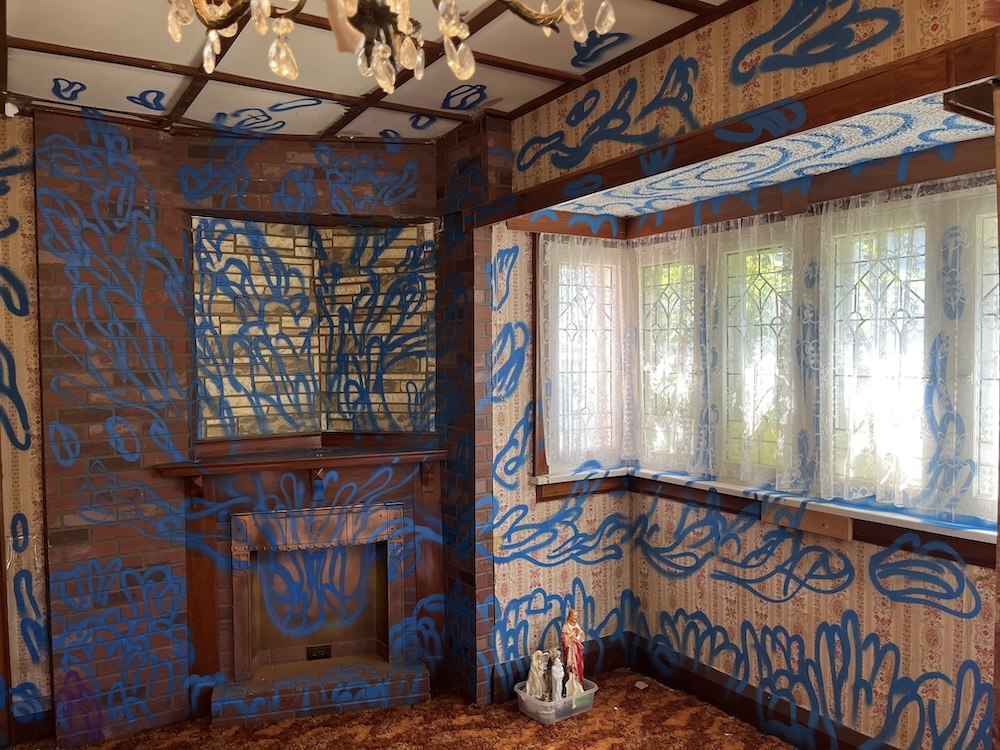
“There’s something very beautiful about the cycle of life and how everything is temporary, but we kind of try and insulate ourselves from that. So, with what I’m painting is more trying to embrace that. And like, the beauty and the ephemerality of everything.”
One of the children who grew up in the home even came by to visit the project.
“It was really wonderful that she’s so supportive of the project. She came in and she was getting such a kick out of seeing how we’ve transformed everything. She answered so many questions. She really loves what we’re doing,” says Avery.
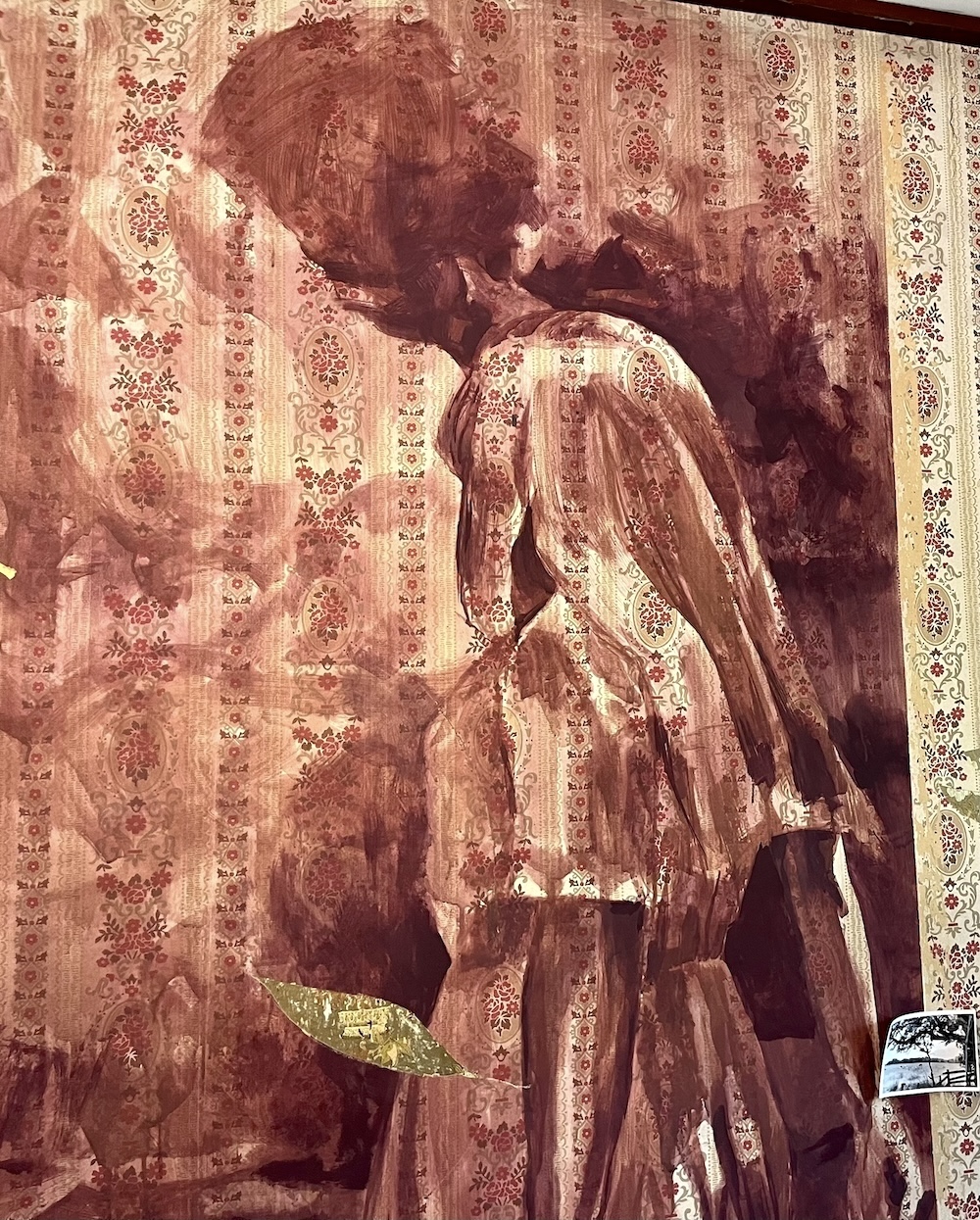
Avery had always planned to reach out to the family that lived in the building, but they came to her before she had the chance. She hopes more family members will come and visit.
The Barton project also speaks to housing affordability, gentrification, and the cost of living in Toronto.
Avery explains that development has negatively impacted many artists, whether that’s by losing their studio spaces, homes, storefronts, or galleries. She herself has lost one of her studio spaces.
However, even though much of her work is critical of the current state of development and housing affordability in Toronto, Avery isn’t totally against development.
“I do agree that it needs to happen. And we need more density, but it’s like we could be doing this in a way that’s so much more considerate of the communities that already exist.”
Doing this initiative in conjunction with developers serves as a bridge between two worlds and could become a way to get communities involved in development projects and for developers to support the arts and other communities.
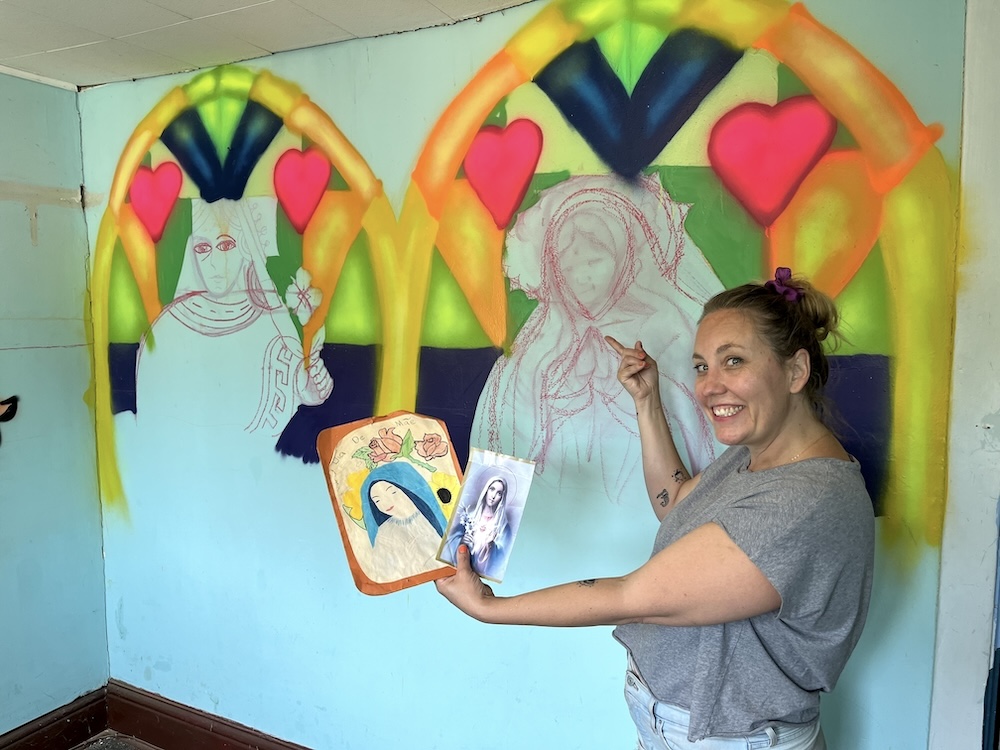
Enabling the public to visit these types of spaces, meanwhile, provides exposure to artwork they might not otherwise have the opportunity to see and also makes us more considerate of our neighbours. How often do we walk past old houses time and time again and not think of the families that lived there? This could serve as a window into who we are as people. It’s a great way to meet others when visiting, too.
Avery and Green Street Flats are still determining how the exhibit will run. Ideally, she is aiming to have everything ready for the second week of August, when the house will then become open to the public, free of charge.
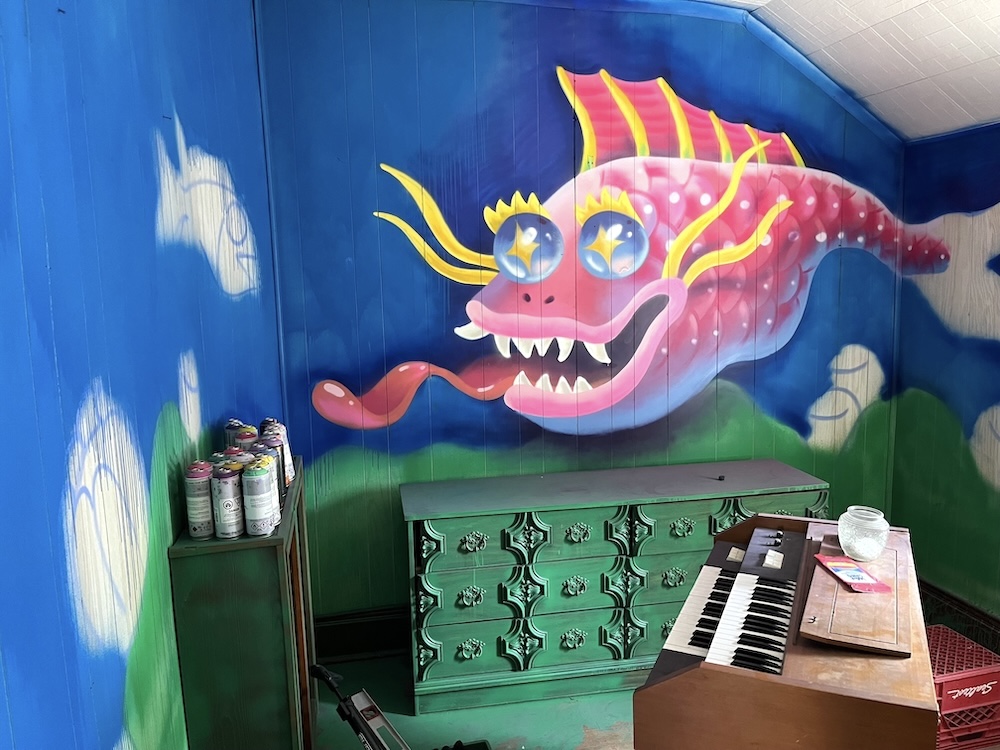
You can visit the project’s Instagram page to follow along in the Barton transformation, and to receive updates on how and when public visits will take place. The artwork featured in this article is incomplete, so be sure to watch as each piece progresses.
All photos by Trent Weston unless otherwise specified.

